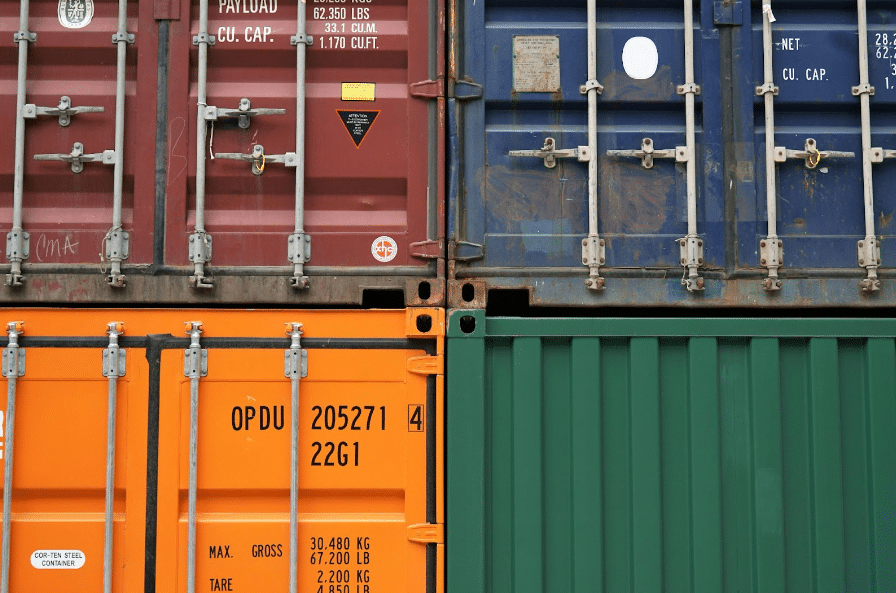Shipping containers are now one of the most widely used ways of transporting goods over huge distances and in harsh conditions. They are made of durable and damage-resistant materials, making it possible to transport various types of products in them and stack them on top of each other. However, for the long journey that such cargoes make, it is crucial to properly secure the shipping container and its contents on the ship. What solutions are currently used in this regard and what to choose?
Maritime container security – cargo organization and security
During transport, shipping containers are exposed not only to harmful effects of weather, moisture, impacts or static pressure. During the entire logistics process, there is also a risk of theft and opening of the container and loss of cargo or damage to it. Therefore, before delegating a shipping container for transport, it is worth taking care of its proper preparation in terms of security.
Depending on the type of cargo, the size of the ship, as well as the selected containers, safe sea transportation is realized only after they are properly arranged on board or in the hold. Most often they are stacked on top of each other and properly secured with special fasteners.
For safe sea transportation to take place, it is also crucial to properly arrange and secure the transported goods inside the containers. As far as possible, care should be taken to evenly distribute the individual cargoes within the container and immobilize them. They should not be subject to shifting or displacement during transport. This could firstly lead to damage to the cargo, and secondly to difficulties at the final stages of transport, for example, during the braking of a vehicle or freight train. The use of appropriate safeguards here depends on the characteristics of the cargo, the quantity, volume and weight of the items being transported.
Examples of securing cargo in containers
Among the most common types of items transported in shipping containers are such products as:
- unpalletized goods (transported, for example, in bags or cardboard boxes) – it often happens that they do not have any additional protection. Their packaging, which is mainly bags or cartons, must be distributed evenly and often occupy the entire free space of the container. In such situations, however, it is worthwhile to use a safety net at the door to protect the container door openers from falling cargo,
- steel, both in sheets on pallets and in coils, is secured by means of straps, steel cables, bandwraps, and often wooden wedges, beams, or even whole racks and bases,
- loading of goods on pallets (cartons, bags) or in box-pallets – the arrangement should minimize the possibility of their movement inside the container, for example, during storms. In addition, belts, spreader beams folk air bags are also often used.
In addition, it is worth knowing that, for example, cars are usually transported in two layers, cargo such as aggregates in bulk, and, for example, nuts in big bags.
Container security – what systems and accessories are used?
Among the most commonly used container security features, first of all, single-use seals should be mentioned. These can be bottle seals, strip seals or wire-based seals. Each such seal bears a unique number, which is also included in the documents accompanying the cargo. If, during transport, it is necessary to open the container and thus break the seal, this must be recorded. A new seal number is then assigned.
For specific cargoes, such as very expensive or fiscally or security-critical cargoes, a GPS locator can be installed on the container to track the container’s journey.
Securing container cargo – what padlock to choose?
Any cargo during transport is exposed not only to damage, but also to theft. Therefore, one of the necessary elements as a security feature of a shipping container is a padlock. It is worth paying some attention to this issue and consider modern solutions that provide a much higher level of security than traditional accessories.
Among the available types of padlocks chosen for securing shipping containers, there are such as:
- mechanical padlocks – the most popular type of this type of security used for container doors. They are distinguished by a simple operating mechanism and are opened with a key,
- electronic padlocks – an advanced version of traditional mechanical padlocks. It has a built-in electronic module that allows it to read QR codes or function (locking and opening) in relation to certain monitoring systems,
- security padlocks – accessories that provide additional security and structural reinforcement. Thanks to the use of extremely strong and resistant materials, they make it much more difficult or impossible to steal or scuff the container during travel.
Securing the container and goods – what should be kept in mind?
In order for the goods in a shipping container to arrive in proper and intact condition, it is important to remember not only to properly secure the container, but also the cargo inside. The key here is the correct stowage of the container, that is, the proper packing, securing and even distribution of the various items inside the container, and then the proper placement of the containers on the ship and securing before the transport begins.
